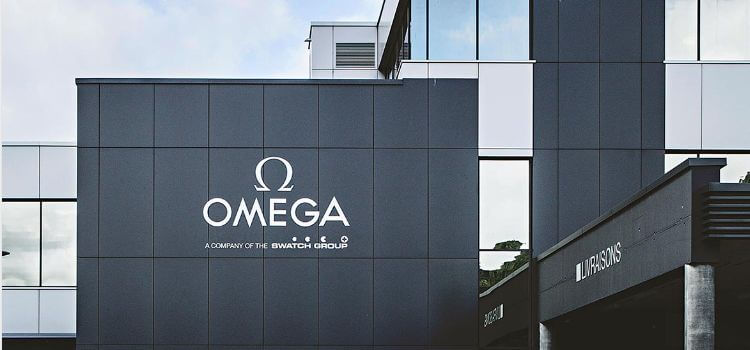As an Amazon Associate, I earn from qualifying purchases.
Omega Watches is a prestigious Swiss watchmaker renowned for its precision, innovation, and iconic timepieces. It operates with a production philosophy rooted in quality craftsmanship and technological excellence. Louis Brandt established Omega in La Chaux-de-Fonds, Switzerland, in 1848. Since then, it has developed into one of the most prestigious luxury watch brands globally, renowned for its enduring heritage in horology.
Legacy and Heritage
Omega’s journey began with a commitment to innovation and reliability. Over the decades, the brand has contributed significantly to the watchmaking industry, introducing breakthrough technologies and setting new standards in precision timekeeping. Omega’s status as a trailblazer in horological breakthroughs was further cemented by its affiliation with space travel. Notably, Omega was NASA’s official watch and the first to be placed on the Moon during the Apollo 11 mission.
Production Facilities
Omega maintains state-of-the-art manufacturing facilities in Switzerland, where skilled artisans and technicians work tirelessly to uphold the brand’s commitment to quality. The production process combines traditional craftsmanship with modern technology, ensuring each timepiece meets the exacting standards synonymous with the Omega name.
Annual Production Volume
While Omega prides itself on exclusivity and meticulous attention to detail, the company closely guards the exact figures regarding its annual production volume. However, industry estimates and historical data provide insights into the scale of Omega’s operations.
Production Factors

Several factors influence Omega’s annual production output:
- Demand and Market Trends: Omega carefully monitors global demand trends and consumer preferences to adjust production levels accordingly. Popular models may see higher production volumes to meet market demands.
- Quality Control: Omega strongly emphasizes quality control throughout the production process. Before being delivered to customers, every watch must pass the brand’s exacting standards through extensive testing and examination.
- Skilled Craftsmanship: Omega watches’ intricate assembly and finishing require skilled craftsmanship and attention to detail. The brand invests in training its artisans to maintain the highest levels of craftsmanship.
Sustainability and Ethical Practices
In recent years, Omega has prioritized sustainability and ethical practices in its production processes. The company prioritizes minimizing its environmental impact, using energy-efficient manufacturing processes, and procuring products responsibly.
Innovation and Technology
Omega continues to innovate with advancements in materials, movements, and design. From pioneering the co-axial escapement to introducing antimagnetic movements and Master Chronometer certification, Omega remains at the forefront of technological innovation in watchmaking.
Conclusion
While specific details about Omega’s annual production numbers remain confidential, the brand’s commitment to quality, innovation, and heritage is evident in every timepiece it creates. Whether crafting iconic models like the Speedmaster and Seamaster or pushing the boundaries of horological excellence, Omega’s dedication to precision and craftsmanship ensures its watches are cherished by collectors and enthusiasts worldwide.
Frequently Asked Questions About Omega Watches

What makes Omega watches special?
Omega timepieces are known for their accuracy, robustness, and extensive history. They have been worn on expeditions to the Moon and endorsed by astronauts and celebrities. Each Omega timepiece is crafted with meticulous attention to detail and incorporates cutting-edge technology, such as the Co-Axial escapement and Master Chronometer certification, ensuring exceptional performance and reliability.
Where are Omega watches made?
Omega watches are proudly made in Switzerland, where the brand originated in 1848. The manufacturing facilities uphold Swiss watchmaking traditions while integrating modern technology and craftsmanship, ensuring that every Omega watch meets the brand’s exacting standards of quality and precision.
How can I authenticate an Omega watch?
To authenticate an Omega watch, look for specific details:
- Serial Number: Every Omega watch has a unique serial number engraved on the case.
- Certificate of Authenticity: Genuine Omega watches have a certificate that verifies authenticity and warranty details.
- Quality and Finish: Examine the watch closely for precision in craftsmanship, logos, and markings consistent with Omega’s standards.
What is the warranty on Omega watches?
Omega provides a warranty that covers manufacturing defects for some time. The exact warranty conditions may change depending on the model and the area where it is purchased. Registering your Omega watch online or through an authorized retailer ensures your warranty is valid.
Are Omega watches a good investment?
Omega watches are considered excellent investments for several reasons:
- Heritage: Omega has a rich history and iconic models that retain or increase value over time.
- Quality: Each Omega watch is crafted with high-quality materials and undergoes rigorous testing.
Popularity: Omega watches have a robust global following among collectors and enthusiasts, contributing to their resale value.
Amazon and the Amazon logo are trademarks of Amazon.com, Inc, or its affiliates.